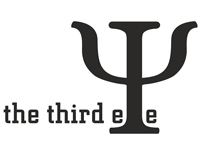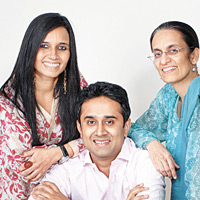Most Powerful Women In Business, Fortune India.
A Blip in our Minds, Businessworld
Branded for life, India Today
The First Choice, Business India
Fortune India's Most Powerful Women In Business



Most Powerful Women In Business, Fortune India.
A Blip in our Minds, Businessworld
Branded for life, India Today
The First Choice, Business India
Fortune India's Most Powerful Women In Business

A Blip in our Minds, Businessworld

Geoffrey Miller in his seminal and delightfully subversive book Must-Have speaks of the post-modern insight: "At its heart consumerist capitalism is not ‘materialistic' but ‘semiotic'. It concerns mainly the psychological world of signs, symbols, images, and brands, not the physical world of tangible commodities. Marketers understand that they are selling the sizzle, not the steak."
For the consumer, a brand has value and earns loyalty when it moves beyond awareness generation and the communication of functional benefits to forge a link with their psyche and aspirations.
Dushyant and Barrun argue that in an environment where the watch category is gradually losing relevance, and their brand is losing salience, the imagery and semiotics around Speeder's Frequa watches need to be updated.
While their logic is sound, the choice of ‘shock' as the hook on which to peg the brand's distinct personality is fraught with risk.
On one hand, in a predominantly young, highly competitive, and increasingly aggressive urban Indian environment, where youth icons like cricketers and actors are frequently seen making brash gestures in public, it is not entirely surprising that brands targeting younger audiences feel the need to align their tonality and expression of values with the perceived psyche of today's youth.
On the other hand, shock as the hook for a brand's identity is almost always polarising. Some audiences, such as sections of the youth or those with a specific psychographic profile (regardless of age) will find resonance with it, while many others will find it alienating. As a result the brand could potentially find itself boxed into a smaller playing field.
Dushyant and Barrun appear to have been influenced by international brands from analogous categories that have been founded with strains of rebellion in their DNA. However, there is a big difference between a brand founded on values consistent with dissent and rebellion and one that suddenly uses them as tactics to draw attention.
For a brand with no history of anti-establishment stances, shock for the sake of shock, with no category-connect, would signal a sudden and alarming departure from its equity.
In a culture increasingly enthralled by breaking news and sensationalism, with ever shrinking attention spans, shock also has a relatively short shelf life. It is likely to be transitory. A brand needs to stand on an emotional foundation that is durable.
Adrian is right to sound a note of caution and put plans for ‘shock' advertising on hold, given the brand's existing equity and the category's context. By resorting to shock advertising, Frequa could potentially dilute its equity and alienate consumers, sacrificing hard-earned consumer trust at the altar of short-term growth. As an idea to revive the brand, it appears to be tactical and sensationalist, instead of strategic and equity enhancing.
With the Frequa brand also present in the sportswear and precision sportaccessory segments, a dramatic positioning change for watches could have unintended consequences for these segments. All elements of a brand - product design, functionality, communication, emotional hooks and imagery — need to reinforce the DNA and send out consistent signals. When this happens, the result is a well-constructed, robust, and durable equity.
Today urban Indians are living through a period of historic churn — in our economy, lifestyles, aspirations, priorities, and our sense of who we are and where we want to go. Increasingly, individualistic lifestyles are breaking out of a historically collectivist social framework. Affluence yet inequality, confidence yet insecurity. For a majority of our youth, the magnetic pull of glitzy modernity versus the roll-your-eyes drag of archaic tradition. At the core is an ancient culture that has hard-wired in us notions of propriety and accepted behaviour.
When torn between opposing strains, a conflicted sense of roles, responsibilities and identities is often the result. Navigating this conflicted space is an intrinsically tumultuous process. A strategy that aims to carefully update the brand such that it is congruent with contemporary codes might be more effective than a short term attention-seeking tactic.
Volatile, polarising swings in the semiotic signals that a brand sends out can occasionally break the clutter, but will end up creating doubts in the minds of consumers leading to long-term equity dilution. Those like Adrian who are sensitive to the consumers' evolving needs and psyche, as well as to the wildly heterogeneous and conflicted socio-cultural space that they are operating in, will build robust brand equities and win the trust of Indian consumers.
The Third Eye is a qualitative research firm. The analysis is presented by Jasmeet Srivastava, managing director; Gitanjali Ghate, managing director; and Satyam Viswanathan, director.
(This story was published in Businessworld Issue Dated 02-04-2012)
View More
Bhagyashree Kondi

Jharna Chawla

Abhishek Pandey